Striped Patterns in Nature
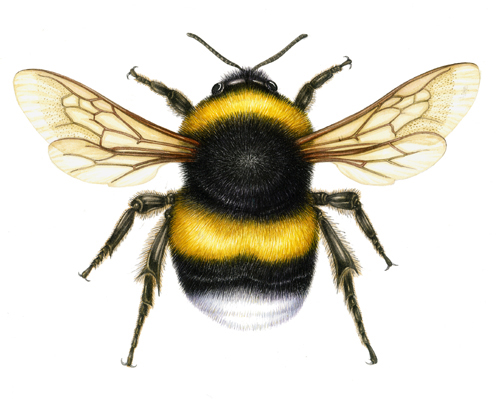
Stripes
Stripes are seen across the animal and plant kingdoms. Although the first stiped animals you think of may be zebra and tigers, there are lots of striped beetles, snakes, birds, and loads of stripy fish.
Stripes for Camouflague
Stripes are a brilliant way of providing camouflage. They break up the edges of an organism, making it harder to see against the background. A baby tapir, rootling in the scrub of a forest will be almost invisible as patches of sunlight and dark shadow fall on its’ back. If you see one in a different environment its’ stripes seem startling.
Likewise, a large predator like a tiger appears invisible as its stripes mimic the vertical lights and darks of the grass it uses as cover before it attacks.

Sketch of Tiger Panthera tigris , the first striped animal many people will bring to mind
Stripes as Camouflage: Breaking up the edges
Stripes are common on coral reef fish, where they not only break up the fish’s outline but can also dazzle and confuse potential predators. Couple striking stripes with the surprise of flashing a big eye-spot, as many Butterfly fish do, and predators won’t risk an attack.
Snakes are often prey, and species with long stripes on their body use these to confuse predators. The stripes flicker as the snake whisks away, and escape occurs before the predator can figure out where the edges of its’ prey are.
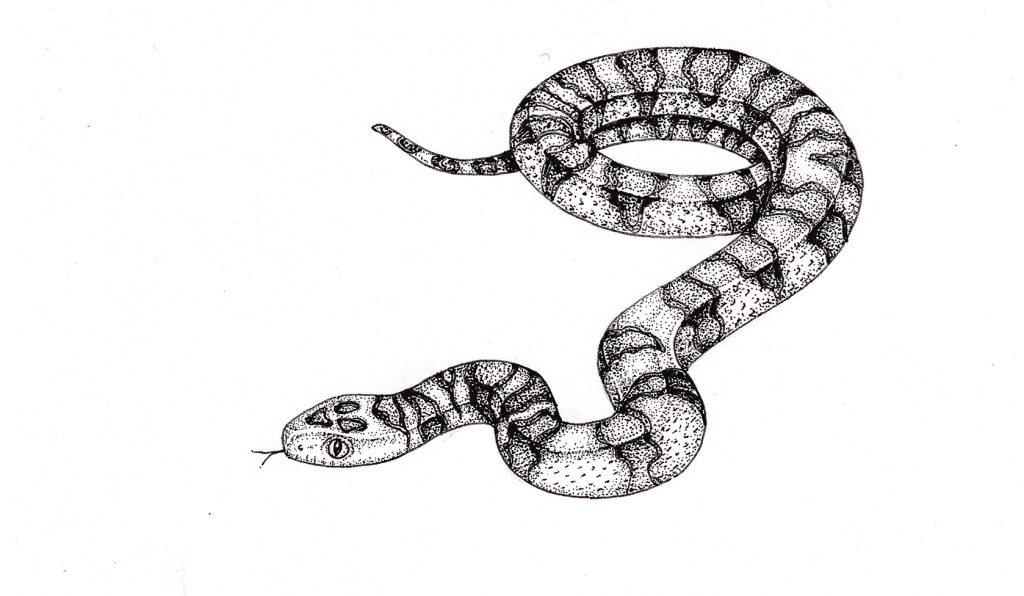
Variable kingsnake Lampropeltis Mexicana thayeri
Stripes as warnings of toxicity
Animals use stripes to signal their toxicity and to warn off predators. The most iconic example is the skunk with tis clear black and white stripes, but unpalatable caterpillars, cone shells, and stinging insects like bees and wasps also use stripes as a warning.
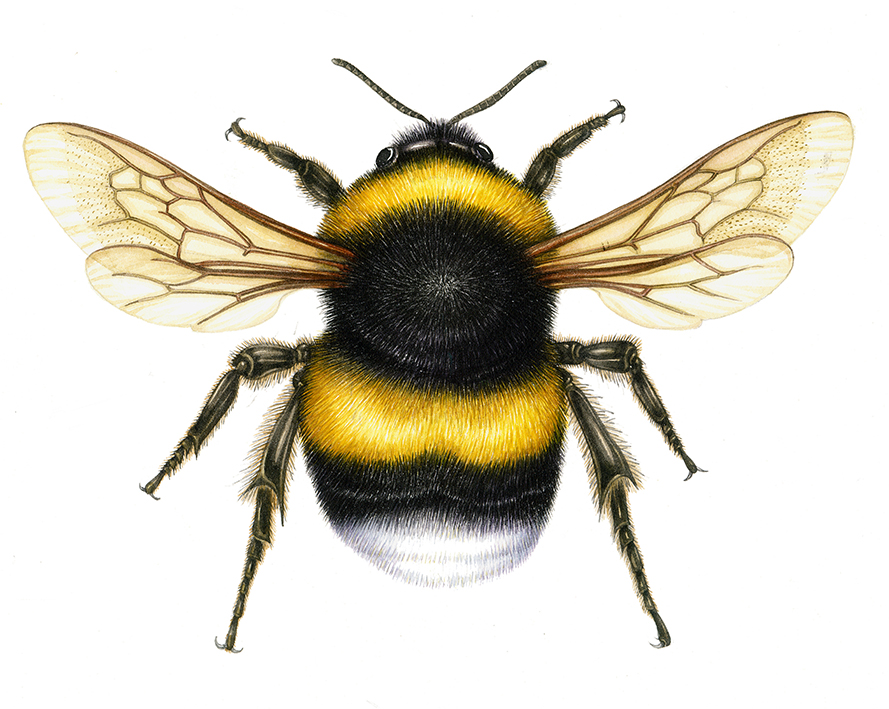
White tailed bumble bee Bombus leucorum
If a predator does happen to take a bite out of these creatures, they may well become ill or get stung. Next time they see that distinct pattern, they’ll avoid it. It’s interesting that so many insects sporting warning stripes are yellow and black.
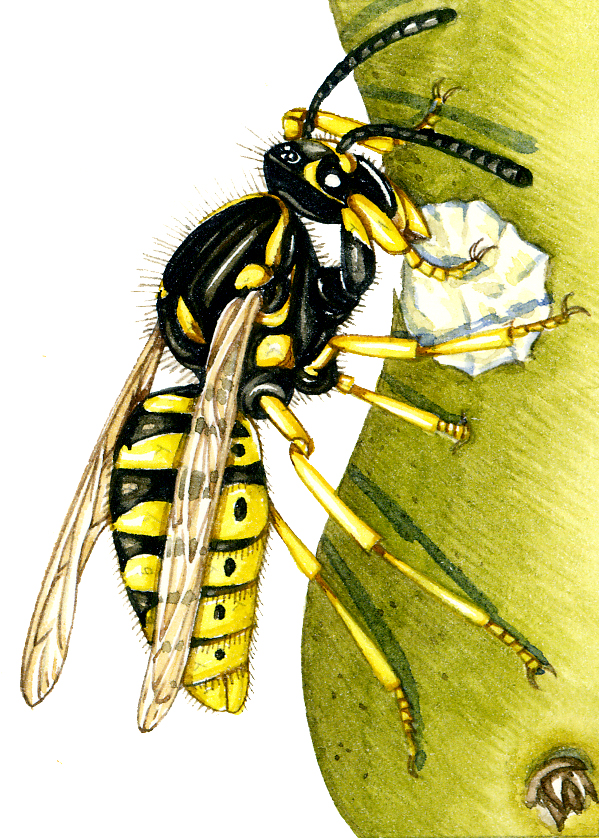
Common wasp Vespa vulgaris
Colorado potato beetles (and many other beetles) have clear stripes. They’re avoided by birds as they taste bad, another example of stripes being a warning to predators.
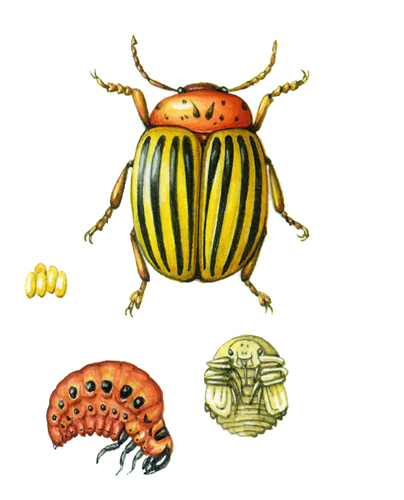
Colorado potato beetle Leptinotarsa decemlineata
Stripes for Mimicry
Stripes are used by mimics, harmless animals that “dress up” like toxic ones in order to avoid being eaten. This is known as Batesian mimicry. There’s a harmless British beetle, the Wasp beetle Clytus arietis which not only has yellow and black stripes, but also moves and behaves like a wasp.
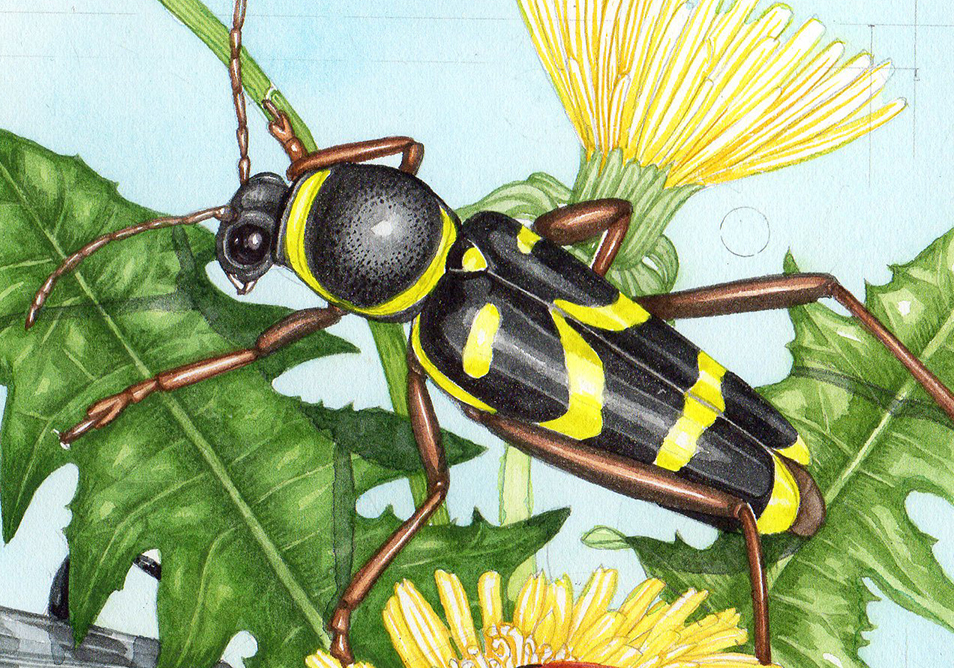
Wasp beetle Clytus arietis
Another mimic happens when nestlings of the Cinereous mourner bird Laniocera hypopyrra hatch. They’re orange and have odd, adapted feathers. They move their heads slowly from side to side, and this makes them look a whole lot like some rather toxic caterpillars that inhabit the same Amazonian jungle. (Morphological and Behavioral Evidence of Batesian Mimicry in Nestlings of a Lowland Amazonian Bird, Londono et al 2015)
One plant uses stripes to mimic the damage done by leaf-miners. The Milk thistle Sibilum maritum has white stripes following the lines of its’ leaf veins, caused by variegation. These give off a message that the leaves are infested with leaf miners, and the adult flies avoid laying their eggs there, put off by the “competition” already within the leaves (Aposematic (Warning) Coloration in Plants, Lev-Yadun 2009)
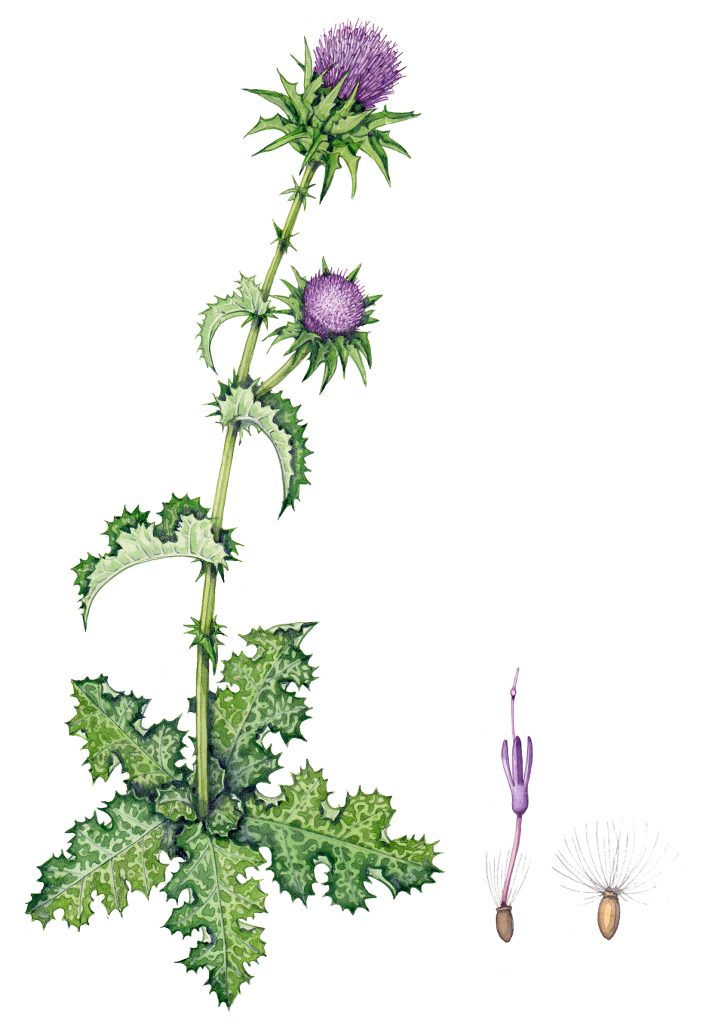
Milk thistle Silybum marianum
A surprising use of stripes is shown by zebra; it’s been shown that these iconic markings don’t confuse predators, but flummox biting horseflies who avoid landing on the stripy surfaces (and biting the zebra). (Benefits of Zebra stripes: Behaviour of tabanid flies around zebras and horses. Caro et al 2019)
Stripes on plants
But why do plants have stripes? They’re not active predators, lurking in the undergrowth. They’re not hapless prey, trying to camouflage themselves in the shadows. Although there’s some suggestion that plants do use pattern as a warning, this tends to be spots rather than stripes. There is one example of a plant that uses warning stripes. In Israel the same Milk thistle Silybum marianum is banded with white stripes and the wider the stripes, the stronger the prickles. (Local loss of the zebra-like coloration supports the aposematic and other visual defense hypotheses in Silybum marianum. Lev-Yadum 2017)
But most plants don’t use stripes for camouflage or warning. So why stripes?
Stripes on Plants: Nectar guides
Plants need to be pollinated. What’s more, they need to advertise to pollinators that they need pollinating, and that they have a sugary reward of nectar for any insect willing to do the job. A really effective way to do this it to have stripes literally pointing to the nectar source, like arrows.
Insects can see ultraviolet rays (which we cannot), and lots of flowers have stripes and colours that only show up in UV light. Under UV light dandelions have bright “red” centres, attracting bees to the flower.
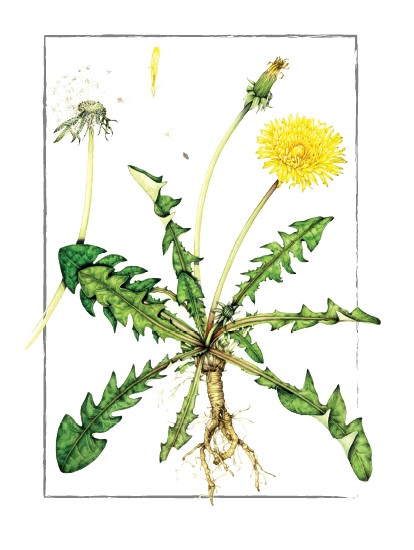
Dandelion Taxicum officinale
Evening primrose, Hibiscus, and some daisies have evolved blue halos which centre around the middle of the flower and are clearly visible to bees. Some flowers have very clear stripes when looked at in “bee vision”, like the Meadow Cranesbill. These are also pointing the way to nectar. It’s no surprise that these stripes, coming out from the centre of a flower, are known as “nectar guides”. For mroe on this check out the blog by the No dig Gardener)
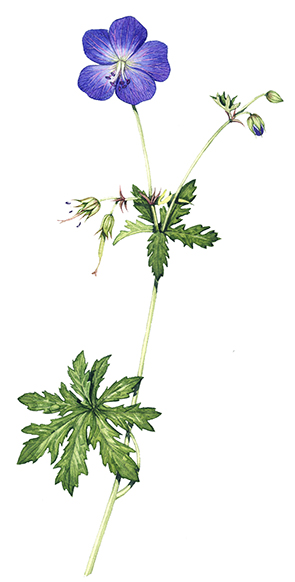
Meadow cranesbill Geranium pratense
If you look really closely at most flowers, you may well see these nectar guides. Sometimes they’re indistinct, and just look like a few dark lines near the centre of the flower; or as paler areas near the centre of the flower, emphasised with stripes.
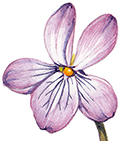
Detail of Marsh violet Viola palustris showing nectar guides
Violets, cranesbills, pea and bean flowers, Mallow, lupins, and hibiscus are just a few flowers with these clear nectar guides.
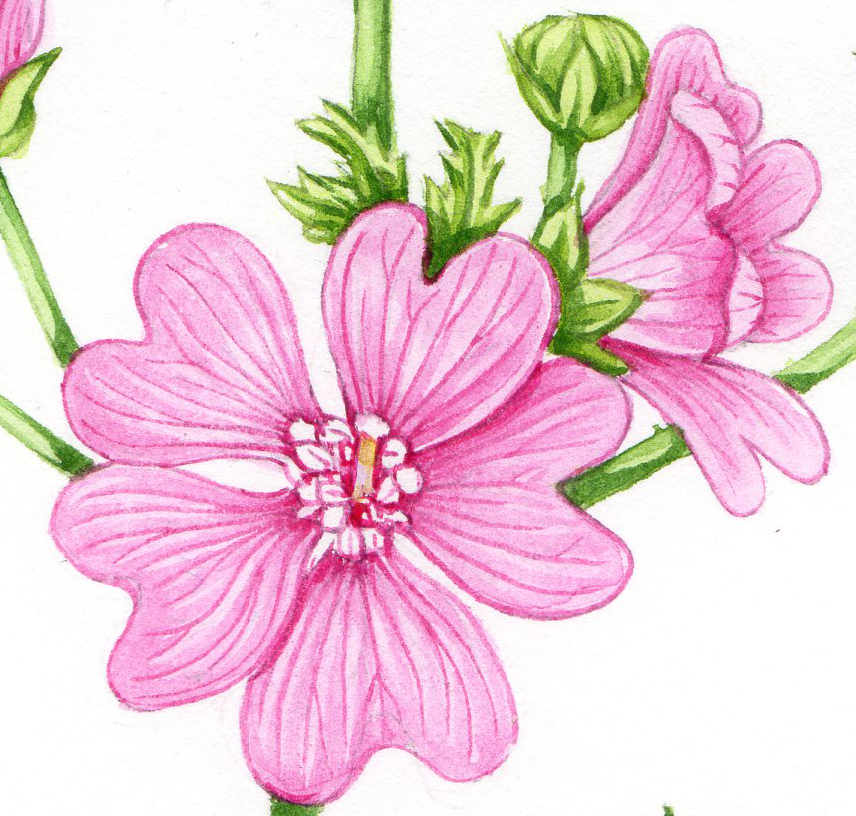
Mallow Malvus sylvestris claerly showing nectar guides
Some flowers are striped all over, not just at their throats. These stripes are often simply the veins of the petals picked out in another colour. Wood sorrel, Cranberry hibiscus, and the bearded iris all show these markings.
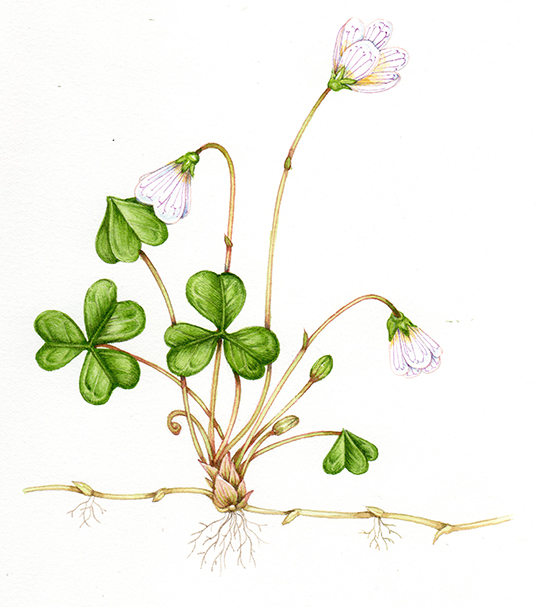
Wood Sorrel Oxalis acetosella
Wider stripes and Flowers
Other flowers have wide stripes of different colours. These tend to be garden plants like Petunias, camelias and tulips, and these stripes are not common in the wild. One exception is the Candy cane sorrel, Oxalis versicolor whose white petals are edged with a crimson stripe.

Tulip flower Tulipa Bestseller
Plant breeders select for them, and it’s important to remember that function and form get a bit confused once you start looking at human-bred organisms.
Orchids often have elaborate patterns, including stripes. Unusually, Tiger orchids, Oncidium has stripes which go across its petals, rather than following the veins of the petal. It makes for a dramatic flower!
Striped leaves
Leaves of houseplants often have white stripes (and other markings) along them. This is a result of variegation, and is selected for by plant breeders.
Spiderplants Cholorphytum comosum are probably the most cultivated houseplant in the world. In their native southern Africa, they have pain green leaves. Other stripy house-plants include Calathea, Sanservia, Bromeliads and Croton. Many of these are native to hot climates, and the stripes that do occur in the wild could relate to preserving water or reducing heat.

Illustration of ferns and striped Calthea leaves
The leaves of the Zebra plant Cryptanthus zonatus (the English and Latin name give us clues to what’s coming!) have white stripes running across them. This is much less common than the longditudinal stripes, and is also a result of variegation.
Striped fruit
Fruit can be striped, especially those in the Cucurbitae family which includes melons, squashes, cucumbers and gourds. These stripes can be quite distinct and variable, and a selection of gourds and melons would make a good still life.
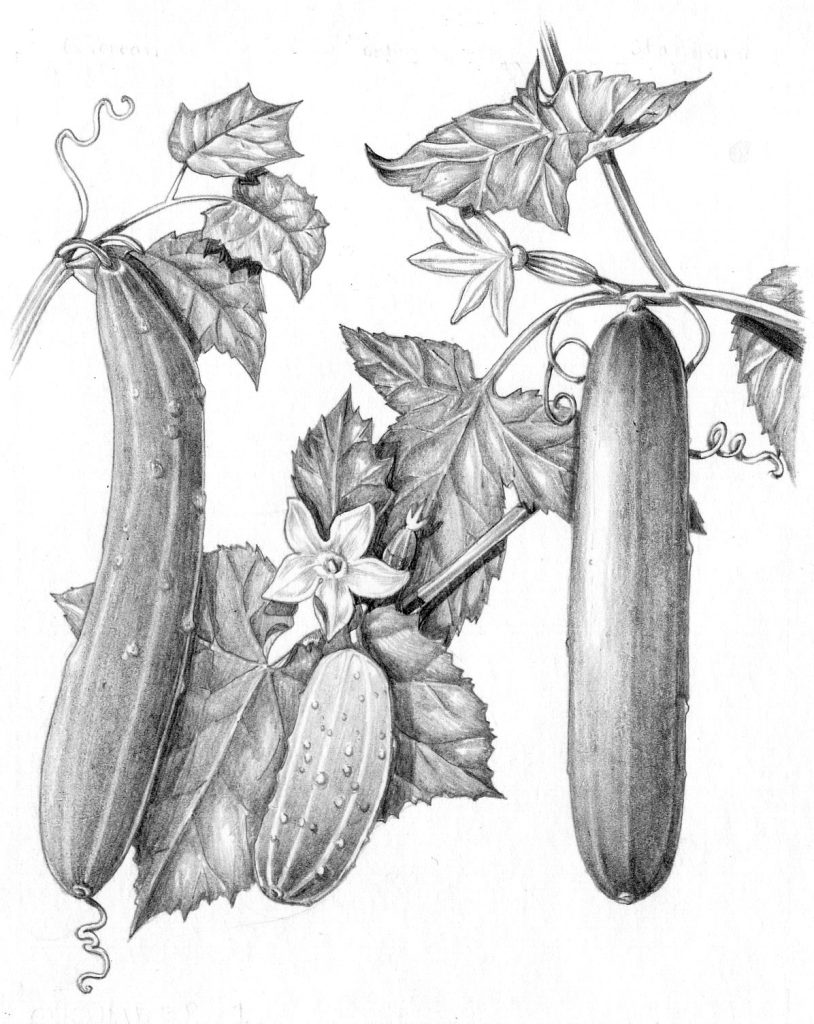
Striped and (an unstriped) Cucumbers Cucumis sativus
Striped seeds
Some seeds are striped. Sunflower seeds, cannabis seeds, and chickpeas can all be stripy and interestingly, all have non-striped versions too. Striped sunflower seeds have thicker coats than monochrome black ones, although it’s unclear why this should be.
Conclusion
We live in a stripy world, for all sorts of reasons. Next time you’re asked to think of a striped animal, consider all the creatures sporting stunning stripes who are not zebra or tigers!

